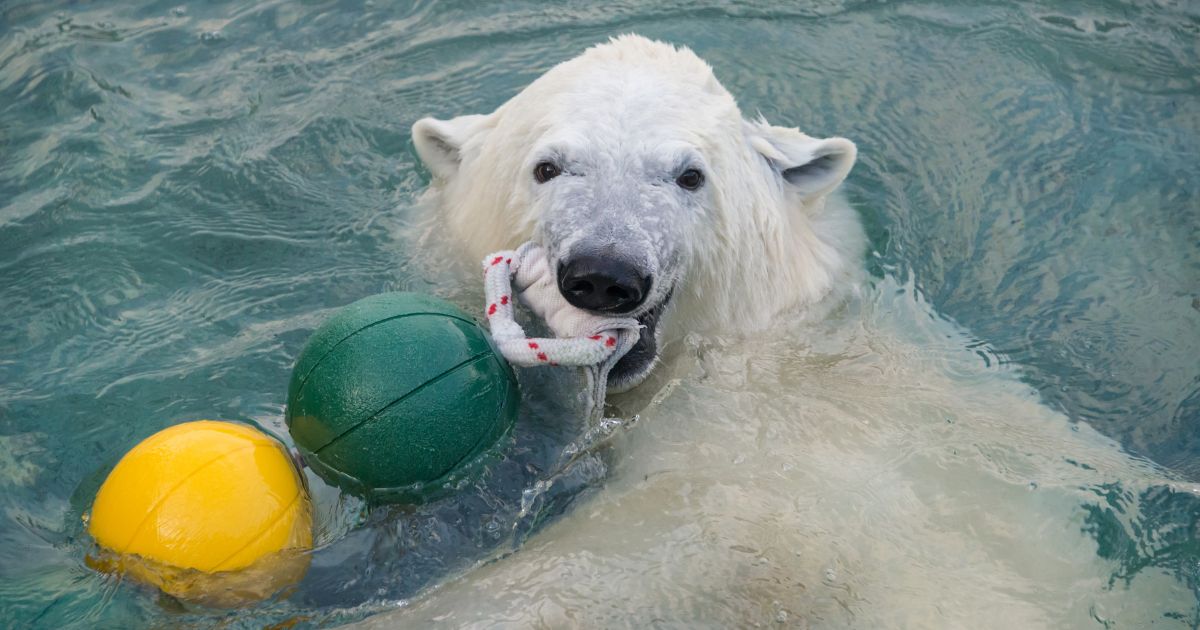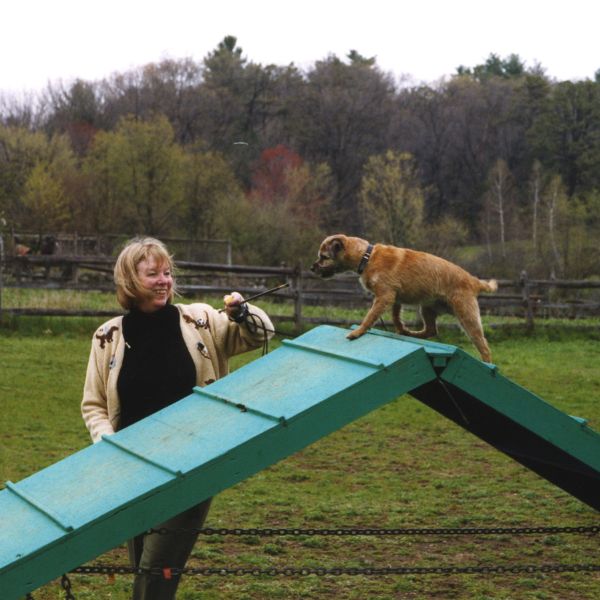
Unlocking Animal Creativity
What if you could ask an animal to invent something new? The “creative” game, an application of operant conditioning, was first developed with dolphins at Sea Life Park in Hawaii. This procedure for teaching animals to invent new behaviors was reported in a study funded by the Office of Naval Research. (See “The creative porpoise: Training for novel behavior,” Karen Pryor, Richard Haig, and Joseph O’Reilly, Journal of the Experimental Analysis of Behavior 1969, 12:653-661.)
Clicker training enables dog guardians to repeat this experiment with their own pets. For example, in 101 Things to Do With a Box, we outline how to click a dog to come up with new ways to play with a box.
But the ‘creative’ game goes beyond dogs and dolphins. At the Franklin Park Zoo outside of Boston, a keeper shared, “It’s so much fun to watch our male gorilla playing the game.” The keeper says, “Show me something new,” and he starts to move his arms. Then you can see on his face he’s thinking, “Oh no, I did that one already.”
At Disney’s Animal Kingdom, keeper-trainer Rachel Cantrell reported in a discussion group that they began playing the game with an adult male gorilla to keep him from pestering the other gorillas during training sessions. The gorilla responded with enthusiasm.
We asked what the gorilla had thought up. Rachel wrote, “He has come up with several behaviors such as: tapping his head with his hands, shaking his arms, standing up and shaking his whole body, standing and bouncing, smacking his lips, rolling his lower lip and shaking his head so that his lips shake. Another behavior that he shows us is something we call ‘the sneak.’ He pulls his forearm up close to his body and moves very close to the mesh as if he wants us to sneak him the reinforcer. When he does this, we reinforce him by throwing the treat in the crook of his arm.”
So now, we’ve seen the creative game embraced by dolphins, dogs, and gorillas—could it unlock the same kind of problem-solving and inventive behavior in one of the Arctic’s most powerful predators?
From Gorillas to Polar Bears
People sometimes think of the training we do as something artificial. Why would you want to demean the animal by making it play games? Never mind if the animal loves the game! Furthermore, to some people, the 101 Things to Do With a Box game seems particularly confusing and problematic when applied to dogs. How does the dog ‘know’ what to do if you don’t tell it? Why would you want it to just guess?
On July 8, my grandson Nathaniel’s sixth birthday, he commandeered his Mom, his Grandma (me), his older brothers, and his friend Taylor, a six-year-old girl who lives on his street, for a trip to the zoo. Roger Williams Zoo, in Providence, Rhode Island, is a small but very pretty and well-thought-out zoo. We liked the giraffes and the elephants and the Thorny Devil (an Indonesian insect), but the hit of the day was indubitably the baby female polar bear (2 ½ years old, 300 pounds) out playing in her pool while her 600-pound mother snoozed nearby.
When we got there, the baby bear was in the water, up against the underwater viewing wall of her pool, bewitching a bunch of children. Nattie and Taylor sat on the floor, noses and hands on the glass. The bear turned herself upside down in the water and put her nose against Nattie’s nose. Then she put her nose against Taylor’s hand. Three times. Taylor put both hands flat on the glass over her head. The bear turned itself rightside up and put her own big paws flat against Taylor’s hands, on the other side of the glass. This bear was playing 101 things to do with an audience!
Every so often, perhaps three times a minute, the bear had to go up and get a breath. Like a click and treat, that provided a sort of break in the action, and very often when the bear dove down again, she did something new. Like what? Well, she could turn and wiggle in any direction. She could see the children very well and followed them, poked at them, and made faces at them (scary-bear faces). She tried blowing different amounts of bubbles. She made noises. Once, she hung from the pool ledge by her back feet for a while, her own back against the glass, looking over her shoulder.
Gale, Nat’s mother, crouched down to the glass next to the children, and the bear rushed her, darting at her sufficiently aggressively to make her jump back involuntarily. “That’s a great behavior, Get Mom!” I said. The bear liked it too, because it went on a riff of play attack. It rushed at a wadded-up shirt in a child’s lap. Other kids immediately produced wadded-up garments, and the bear darted at those (parents began to worry about whether the glass was really thick enough). One boy unfolded a zoo map and spread it on the glass. Wham, the bear feigned an attack on that, this time with an audible underwater growl.
I think my favorite behavior of all was one I observed later, from the surface. The bear was seeing how long she could stay upside down under water while holding her left hind foot in the air.
All in all, from my hasty notes made that night, this big baby bear came up with around sixty behaviors in about ten minutes, about half of which involved getting the kids to do something, too.
And it made me think. We often say that with clicker training, we see the best side of the animal. We like the 101 Things game because it brings out the animal’s mental capacities. And here was a wild animal, captive-born but not yet trained, using these innate capacities on her own. Part of being a successful polar bear must include developing initiative, imagination, flexibility of mind and body—and a certain sense of humor. That’s what this baby was working on.
I think the ‘game’—and the communicative aspect of our clicker work—is far from artificial. It exemplifies Mother Nature at her best. So much of the behavioral world divides what animals do into ‘natural’ behavior, such as dominance, fear, and aggression, and behavior modification or training. In truth, I think it’s a continuum with a lot of overlap. This is going to be a constant theme at ClickerExpo; let’s bring these diverging views together, and let us talk about the whole animal, brain included—it’s the separation that’s artificial.
Note: This letter was originally published on 07/01/2003 and last reviewed on 03/05/2025. We regularly review our content to ensure that the principles and techniques remain valuable and relevant. However, best practices continue to evolve. If you notice anything that may need updating, please feel free to contact us at editor@clickertraining.com.

